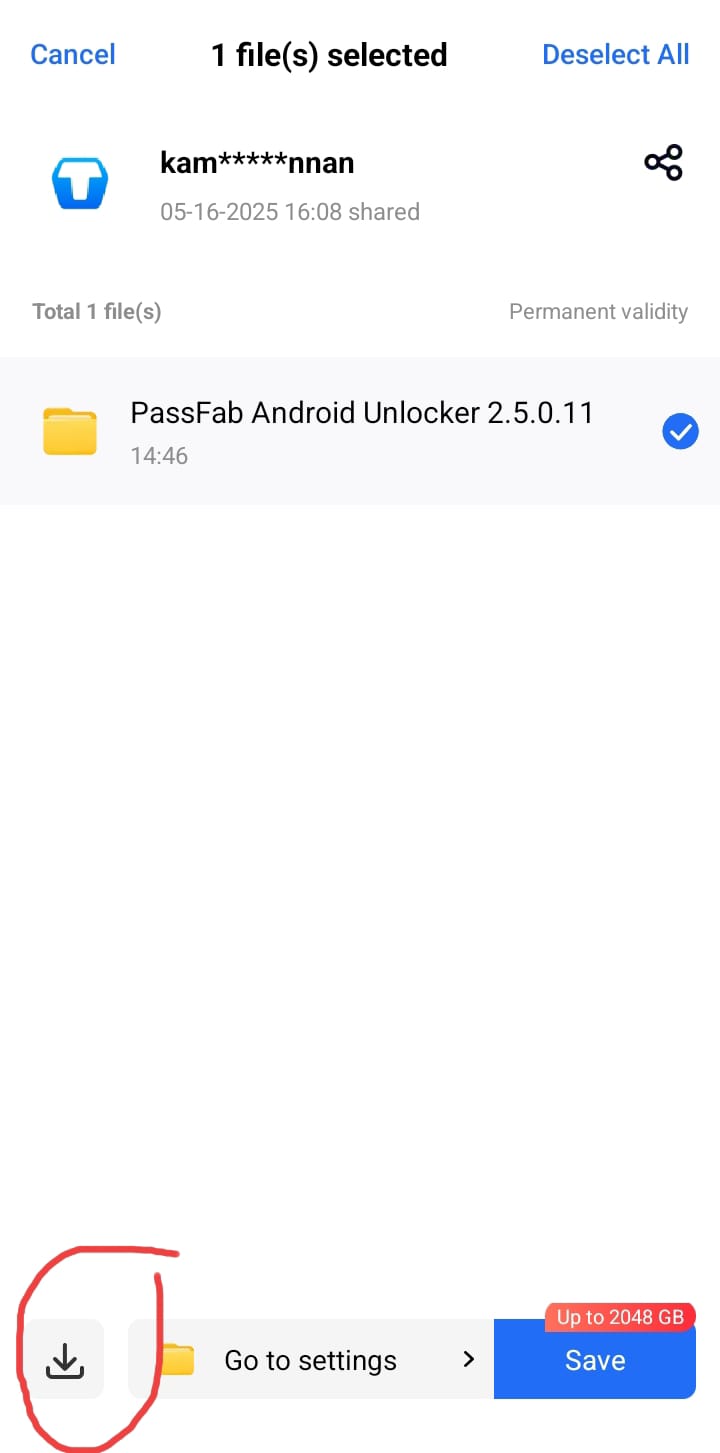Download Full Version Android Unlocker For Free Only From Complete-web-data.com

Introduction to Android Unlockers: What They Are and Why They're Useful
Android unlockers are specialized software tools designed to help users bypass locked screens or restrictions on Android devices. These tools can address a variety of scenarios, including forgotten passwords, PINs, or patterns, or instances where biometric methods like fingerprints or facial recognition fail. By targeting the security mechanisms embedded in Android operating systems, unlockers enable users to regain full access to their devices without requiring advanced technical expertise. Such tools cater to a broad audience, including individuals who have accidentally locked themselves out of their phones, IT professionals working on enterprise devices, or even those facing technical issues due to software bugs. Android unlockers can also be helpful for unlocking second-hand devices or devices left inactive for long periods. They ensure that a locked device does not become entirely non-functional, which could otherwise lead to data loss or the need for costly repairs. Android unlocker tools are particularly versatile because they support multiple types of unlocking methods. These methods might include removing screen locks, bypassing Factory Reset Protection (FRP), deactivating Google account locks, or unlocking carrier-restricted phones. Developers regularly ensure compatibility with different Android versions and brands, making them accessible to a wide range of users.
The usefulness of these tools extends beyond convenience. They save time, bypassing the lengthy processes often involved in reaching out to manufacturers or service providers. Moreover, they empower users with greater control over their devices, offering quick and effective solutions for unlocking challenges. Through user-friendly interfaces and intuitive functionality, they make device recovery and usability a straightforward process for all.
Key Features of a Full Version Android Unlocker
A full version Android unlocker is a comprehensive tool designed to bypass restrictions, remove locks, and provide users unrestricted access to their Android devices. It offers an array of features that enhance its functionality and usability, making it an essential utility for users in need of unlocking solutions. Below are the core features of a full version Android unlocker:
1. Support for Multiple Unlock Methods
-
A full version unlocker supports a variety of unlocking methods, including pattern, PIN, fingerprint, face recognition, and password. This flexibility ensures compatibility with a wide range of Android devices and their security protocols.
2. Compatibility with Various Android Versions
-
The tool is equipped to work seamlessly with multiple versions of the Android operating system, including the latest updates. This allows it to cater to users with both older and newer devices.
3. Bypass FRP Lock (Factory Reset Protection)
-
One of its standout features is the ability to bypass Google’s FRP lock. This functionality is especially useful for users who are unable to access their devices after performing a factory reset.
4. User-Friendly Interface
-
Designed with ease of use in mind, the software typically features an intuitive interface that makes it accessible to users with varying levels of technical expertise. Simple navigation ensures quick and hassle-free operation.
5. Device-Specific Optimization
-
Advanced unlockers provide optimized performance based on the specific make and model of the Android device. This precision minimizes errors during the unlocking process.
6. No Data Loss Functionality
-
A full version unlocker often offers the ability to retain the user’s data while unlocking the device. This safeguards essential files and prevents unnecessary data loss.
7. Multilingual Support
-
To cater to a global audience, many unlockers come with multilingual support, ensuring that the software can be easily used by non-English speakers.
8. Safety and Security Standards
-
Premium unlockers emphasize adherence to safety protocols, ensuring the device’s hardware and software remain unaffected during the unlocking process.
Each of these features collectively makes a full version Android unlocker a versatile and reliable tool for addressing a wide range of locking scenarios. Users can rely on these functionalities to regain seamless access to their locked devices efficiently and effectively.
Why Choose Full Version Unlocking Over Free Alternatives?
Unlocking Android devices requires reliable and secure software, and while free alternatives may seem appealing, they often come with limitations and risks that can outweigh any potential savings. Opting for the full version of Android unlocking tools ensures greater functionality, better support, and a safer overall experience. Free alternatives typically have restricted features, meaning users might not access vital unlocking options. These stripped-down versions often lack compatibility with newer devices or software updates, leading to potential failures during the unlocking process. Full-version tools, on the other hand, are fully supported with frequent updates to ensure seamless operation on a wide range of devices and operating system versions. Another critical concern with free tools is data security and privacy. Free options often include ads, malware, or data tracking components that jeopardize sensitive user information. Full versions from reputable sources offer a guarantee of safety, often backed by robust encryption protocols and certifications. This added layer of security makes them a more trustworthy option. Support and troubleshooting assistance are also significantly better with full versions. Many free alternatives provide limited or no customer support, leaving users stranded when issues arise. Full-version tools include access to responsive support teams, detailed user manuals, and community forums to address technical challenges effectively. Performance and success rates also set full versions apart. Paid software is rigorously tested for optimized performance, ensuring efficient unlocking without errors. Free tools, on the other hand, may have inconsistent success rates, leaving users with partially unlocked or damaged devices.
In short, full version unlocking tools provide comprehensive features, reliable performance, and professional-grade support, eliminating the risks commonly associated with free alternatives.
How Android Unlockers Work: A Technical Overview
Android unlockers are specialized tools designed to bypass restrictions imposed on Android devices, such as screen locks, carrier locks, or factory reset protections (FRP). These tools rely on a combination of software and hardware-level procedures to override security protocols and restore full access to the device. They operate within the Android ecosystem, leveraging its architecture to perform decoding and unlocking processes efficiently. At a high level, Android unlockers function by exploiting specific aspects of the Android operating system. The Android OS operates on a Linux kernel, and its security mechanisms are built on a combination of file encryption, lock screen PINs/passwords, and Google account authentication layers. Unlocking tools identify vulnerabilities or weaknesses in these systems to circumvent access limitations. For instance, by communicating directly with the device’s bootloader, an unlocker can sometimes gain access to reset or bypass lock configurations. Some unlockers use advanced algorithms to interpret encrypted data stored in the device’s internal memory. These algorithms reconstruct unlock credentials or reset authentication systems without erasing user data. In contrast, others may require the device to be connected to a computer via USB and utilize Android Debug Bridge (ADB) commands to manage the unlocking process. Tools are often differentiated by their ability to handle particular lock types, including pattern locks, PINs, or even biometric systems.
Unlockers must adapt to diverse hardware implementations from manufacturers, as each device’s chipset and firmware may have proprietary functionalities. Some tools incorporate compatibility with multiple brands, making use of generic exploits or even specific backdoor systems if exposed. Such flexibility makes these tools versatile but subject to rapid updates to match the evolving security measures of Android OS updates and patches.
Important Precautions Before Unlocking Your Android Device
Unlocking an Android device is a powerful way to gain complete control over its functionality, but it must be approached carefully to avoid potential risks and complications. Users are encouraged to understand the implications and prepare adequately before proceeding. Below are crucial precautions to consider:
1. Back Up All Important Data
Unlocking an Android device often involves a reset or alteration of its software. This process can wipe all data, including contacts, media, and application settings. It is essential to create a full backup of critical files using reliable tools like Google Drive, external storage, or a dedicated backup application.
2. Verify Device Eligibility
Not all Android devices can be unlocked safely. Users should confirm that their specific model supports unlocking and that it will not void warranties or violate terms set by the manufacturer or carrier. Researching device-specific guidelines is highly recommended.
3. Understand the Risks
Unlocking may expose the device to security vulnerabilities or cause it to become unstable if performed incorrectly. Users should be aware that this step can potentially brick their device, rendering it unusable. One must acknowledge these risks and weigh them against potential benefits.
4. Install Required Drivers and Tools
The unlocking process often requires specific tools or software drivers for the device to communicate with the computer correctly. Ensuring these components are downloaded and correctly installed beforehand reduces errors during the unlocking process.
5. Charge the Device Fully
A fully charged device is necessary to prevent unexpected shutdowns during unlocking. Interruptions caused by low battery levels can result in an incomplete process, leading to irreversible issues.
6. Disable Security Features
Security protocols such as encryption or screen locks may interfere with the unlocking procedure. Temporarily disabling these features is often required to avoid interruptions and ensure a smooth process.
7. Research Reliable Sources
Use trusted software and tools from verified websites or developers. Malicious or outdated unlocking tools can compromise your device, so securing a legitimate solution is paramount.
Common Problems During the Unlocking Process and How to Solve Them
Unlocking an Android device can sometimes present challenges, particularly when using third-party software like Android Unlocker. Understanding these issues and their solutions can smoothen the process.
1. Device Not Recognized by the Software
-
Problem: The most common issue users encounter is the inability of the Android Unlocker to detect their device. This can happen due to faulty USB connections, lack of proper drivers, or outdated software.
-
Solution: Ensure a functioning USB cable is used and that USB debugging is enabled on the device. Install or update the necessary device drivers and confirm compatibility between the software version and the Android version of the device.
2. Software Freezing or Crashing
-
Problem: The program may freeze or unexpectedly close during the unlocking process due to system resource limitations, bugs, or incomplete installation.
-
Solution: Close unused applications to free system resources and restart the software. Perform a clean reinstallation of the Android Unlocker to resolve potential installation file corruption. Also, check for software updates, as these often include fixes for known bugs.
3. Stuck in Bootloop After Unlock
-
Problem: Some devices may experience a bootloop—repeated restarts—after the unlocking attempt, leaving the user unable to access the system.
-
Solution: Restart the device in recovery mode and wipe the cache partition. If the problem persists, perform a factory reset. It is advised to back up data before initiating the unlocking process to hedge against potential data loss.
4. Partial Unlock or Lock Reverting
-
Problem: Occasionally, the unlock may appear successful, but some features still remain inaccessible, or the lock reinstates itself after a reboot.
-
Solution: Restart the process from the beginning, ensuring all instructions are followed step-by-step. Verify the software compatibility with the specific lock type, such as PIN, pattern, or FRP lock.
5. Error Codes Displayed
-
Problem: Error codes such as “Connection Lost” or “Unsupported Device” might appear, halting the unlocking process.
-
Solution: Refer to the software’s manual or support documentation to interpret error codes. Double-check the connection, verify device support, and try restarting both the computer and the device.
Encountering these hiccups is normal, but understanding their causes and resolutions can help users troubleshoot effectively and proceed with confidence.
Ensuring Security After Unlocking Your Android Device
Unlocking an Android device, whether through official methods or third-party tools, comes with inherent risks that necessitate strong security measures. Once an Android device is unlocked, the default system protections may no longer be as stringent, leaving vulnerabilities that could be exploited. Users must adopt proactive strategies to safeguard their personal data and device integrity post-unlock.
Steps to Enhance Security Post-Unlock:
-
Set a Robust Screen Lock Method: Utilize high-security authentication features like PINs, passwords, or biometrics (e.g., fingerprints or facial recognition). Avoid simplistic patterns or numeric codes that are easy to guess.
-
Enable Two-Factor Authentication (2FA): Two-factor authentication provides an additional layer of security for online accounts and services accessed through your unlocked device. Many apps and systems support 2FA, requiring both a password and a confirmation code from the user.
-
Install Antivirus and Anti-Malware Software: Download reputable antivirus software to detect potential malware threats or unauthorized attempts to access your data. Keeping antivirus programs updated ensures they remain effective against new vulnerabilities.
-
Keep the Operating System Updated: Regular updates provided by the operating system ensure access to the latest security patches. Even for unofficial or rooted devices, obtaining custom ROMs with updated security is advisable.
-
Be Cautious with Permissions: Pay attention to app permissions, especially for apps downloaded outside the Google Play Store. Ensure apps only access essential features or data to minimize risks of unauthorized activity.
-
Disable USB Debugging: After unlocking, ensure that USB debugging is disabled unless being used for trusted operations. When enabled, this feature can make the device more vulnerable to malicious actions if it falls into the wrong hands.
-
Regular Backups: Create periodic backups of important data. While ensuring security, backups also provide an added layer of recovery in the event of an attack or device failure.
Implementing these strategies aids in mitigating risks while maximizing the advantages of a fully unlocked Android device. Adhering to best practices ensures enhanced security and a seamless user experience.

